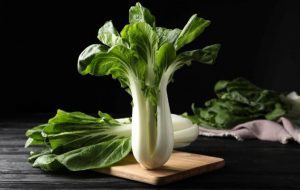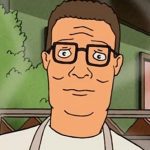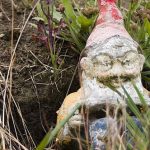 Weird Stuff
Weird Stuff  Weird Stuff
Weird Stuff  Our World
Our World 10 Archaeological Discoveries of 2025 That Refined History
 Weird Stuff
Weird Stuff 10 Fascinating Facts You Might Not Know About Snow
 Miscellaneous
Miscellaneous Top 10 Things Crypto Was Supposed to Change & What Actually Did
 History
History 10 Huge Historical Events That Happened on Christmas Eve
 Music
Music 10 Surprising Origin Stories of Your Favorite Holiday Songs
 History
History 10 Less Than Jolly Events That Occurred on December 25
 Weird Stuff
Weird Stuff 10 Funny Ways That Researchers Overthink Christmas
 Politics
Politics 10 Political Scandals That Sent Crowds Into the Streets
 Weird Stuff
Weird Stuff Ten Bizarre Facts About The Doge Meme
 Weird Stuff
Weird Stuff 10 Weird Things People Used to Do at New Year’s
 Our World
Our World 10 Archaeological Discoveries of 2025 That Refined History
 Weird Stuff
Weird Stuff 10 Fascinating Facts You Might Not Know About Snow
Who's Behind Listverse?

Jamie Frater
Head Editor
Jamie founded Listverse due to an insatiable desire to share fascinating, obscure, and bizarre facts. He has been a guest speaker on numerous national radio and television stations and is a five time published author.
More About Us Miscellaneous
Miscellaneous Top 10 Things Crypto Was Supposed to Change & What Actually Did
 History
History 10 Huge Historical Events That Happened on Christmas Eve
 Music
Music 10 Surprising Origin Stories of Your Favorite Holiday Songs
 History
History 10 Less Than Jolly Events That Occurred on December 25
 Weird Stuff
Weird Stuff 10 Funny Ways That Researchers Overthink Christmas
 Politics
Politics 10 Political Scandals That Sent Crowds Into the Streets
 Weird Stuff
Weird Stuff Ten Bizarre Facts About The Doge Meme
10 Bizarre Farms You Never Knew Existed
Basil in bubbles? Floating cows? These oddities can be found on what can only be described as the world’s strangest farms. Some of these places are so unusual that they are the first of their kind or highly experimental. From a plantation where the Moon calls the shots to a farm where everybody runs for their lives, here are 10 times agriculture took a walk on the weird side.
Related: Top 10 Strangest Farms From Around The World
10 Crops Inside Balloons
A few years ago, scuba enthusiast Sergio Gamberini was on holiday when he had a lightbulb moment. Why not grow food under the ocean? After all, the sea has many plant-friendly properties suitable for horticulture.
Once he returned to his homeland of Italy, Gamberini installed underwater “greenhouses” off the coast of Noli. Forget about your garden-variety glass huts. These were vast empty balloons sunk to a depth of 19.6 feet (6 meters), where they were filled with an oxygenated atmosphere. Once the balloons were in place, Gamberini started growing strawberries, beans, lettuce, and basil.
The biospheres provided perfect growing conditions. They maintained constant temperatures, greenhouse humidity, and suitable levels of carbon dioxide. As a result, the plants flourished.
However, nature didn’t always play along. On several occasions, rough seas completely destroyed the crops. Even so, some believe that the rapid growth rates of the plants inside the biospheres can bring food security to countries with poor farming land.[1]
9 This Desert Farm Uses Saltwater
Farming vegetables in the desert with seawater is a bad idea. Unless you’re Sundrop Farms in Australia. This indoor facility was born in 2014 when researchers wanted to create a farm that could produce crops without resources that might get scarcer in the future. These included soil, fresh water, and an over-reliance on the grid for electricity.
As a world-first, the gigantic greenhouse was built in the South Australian desert. The plants grow in coconut husks and soak up plenty of sunlight and seawater. This might sound harmful, but thanks to a desalination process that happens on-site, the seawater is fresh and safe for the crops. The plants are also pampered with nutrients and sustainably sourced carbon dioxide. Solar panels produce most of the power, but a backup system connected to the grid ensures the well-being of the plants.
The result? Sundrop Farms produces up to 18,739 tons (17,000 metric tonnes) of tomatoes every year.[2]
8 A Floating Sea Farm

Sundrop Farms is not the only unique prototype to come out of Australia. In another attempt to combat natural resources that are under pressure, the University of South Australia recently decided to move agriculture to the sea by cultivating broccoli, lettuce, and pak choi inside a floating farm.
The farm has two major parts. The bottom half is an ingenious setup that evaporates seawater into freshwater using solar power and the sun’s heat. The now-drinkable water is then transferred to the upper deck that resembles a glasshouse. Here, vertical-growing crops are irrigated without any human involvement. In fact, the entire floating farm is automated and only needs the sun and sea to produce clean water and grow food.
Researchers hope to make similar but larger sea farms in the future. Since Earth’s population is expected to reach 10 billion people by 2050, such farms could counter food and drinking water shortages in the decades ahead.[3]
7 Farming Algae over Highways
Imagine driving down a highway and passing underneath a tube-like farm. Logic might suggest that carbon dioxide rising from a busy lane of traffic is harmful to anything on a farm. But one crop thrives on this toxic gas—algae.
In 2014, Dutch and French designers wanted to solve an old problem with a novel idea. Since algae consume carbon dioxide and release massive amounts of oxygen, placing it over a highway might reduce pollution in a natural way.
And this is exactly what they did on a highway overpass in Switzerland. The system consisted of a viaduct where the plant-like organisms were cultivated inside tubes while solar panels, filters, and pumps allowed things to run smoothly.
Besides gobbling up dangerous gases, a mature algae crop can be harvested to create a variety of things, including nutrients, cosmetics, medication, and biodiesel.[4]
6 A Farm Where Cows Rule
On dairy farms, a manager decides when cows eat and rest and when they get milked. While this is efficient, experts worry that by disregarding what the animals want, the health of the herd suffers. In turn, the quality and quantity of milk could also deteriorate.
So the University of Connecticut allowed a herd of 100 cows to do their own thing at their Kellogg Dairy Center. The cows decided when to rest, where to go, when to do nothing, and when to get milked (they willingly entered a fully automated machine that milked them without human assistance).
This milking machine is laden with gizmos that identify each animal and gather data about cow behavior, milk composition, and production. Video cameras on the property and sensors inside the bovines reveal more about where they go when they take a break from milking, when they eat, and how they spend their day.
Researchers are hoping that this farming experiment will reveal what leads to happier and healthier cows and better milk production, a win-win situation for everyone.[5]
5 A Snow Farm
Every year, Sunshine Village Ski Resort in Alberta, Canada, welcomes skiers and snowboarders to fly across pristine snow runs. But few visitors know that the resort is also a farm—of sorts.
Most ski resorts make their own snow, as this allows them to open earlier in the fall. The majority of them use snow machines, but Sunshine Village is different. They farm natural snow, a feat that doesn’t require any electricity, large amounts of water, or equipment like the other resorts. Mostly, they just need a fence. A long fence.
Along the resort’s highest terrain, winding through the Canadian Rockies, special snow fencing runs for about 15 miles (24 kilometers). Designed to catch wind-blown snow, the white stuff accumulates in massive drifts against the fence, which resort staff then spread across the slopes.
While a small number of other ski resorts also use this method, Sunshine Village pioneered the technique, and they likely remain the largest “snow farm” in existence today.[6]
4 Floating Cows
In 2012, when Hurricane Sandy struck New York City, a Dutch engineer by the name of Peter van Wingerden was visiting the city, and he saw the damage first-hand. The biggest impression the storm made on him was how flooding prevented trucks from delivering food to those who needed it.
For a long time before he went to New York, van Wingerden wanted to find a way to produce vegetables, eggs, and milk close to a city’s population to better food security. He had a vague idea about a floating farm, but Sandy galvanized him to turn his dream into a reality. After seven years of planning and spending $2.9 million, the engineer succeeded.
The two-story platform consists of 35 dairy cows, grazing areas, and robots that clean up after the herd. The massive structure now floats in Rotterdam’s active Merwehaven Harbor, and the milk is already being sold to several retailers. If all goes well, more floating farms will be built, this time for vegetable and egg production, making urban farming more sustainable.[7]
3 Golden Dog Farm
There is a farm in Jefferson, Vermont, where the crops include maple syrup, honey, fruit, and grapes. Golden Dog Farm also offers Happy Hour to visitors, and while cider is served, the alcohol is not the reason why people flock to this farm. They come for the golden dogs. More specifically, a gorgeous pack of golden retrievers collectively referred to as a “happy.”
Dog lovers can book their own “happy” for an hour and bask in the affection of up to 12 dogs. The owners of the farm never expected their venture to turn into a viral success, but once fur-parents started to spread the word online, bookings kept selling out. The canines are not complaining. They get to play ball, snuggle, and pose for photos all day long.
For some visitors, the experience brings tears of joy. Many people who arrive at the farm have recently lost a pet or live in a place where dogs are not allowed. Golden Dog Farm allows them to get mobbed by people-loving mutts and have a wonderful time.[8]
2 A Mystical Rare Tea
In India, clinging to the slopes of the Himalayas is the Makaibari tea estate. It’s Darjeeling’s oldest tea estate and the world’s first biodynamic tea farm. Harvest season for a special tea is not dictated by the plants or the earth. Between March and October, pickers wait for a night when the sky is clear, the moon is full, and the ocean tides are high. They also adhere to the rhythm of the planets to select the right time.
On the chosen night, pickers gather for a unique event that is both spiritual and ceremonial. Men beat drums while women dance and pray for good fortune and protection (the area has wild leopards). When the moon is at its brightest, right after eight in the evening, the workers race against time to complete the harvest before midnight. Since sunlight is believed to dilute the taste of the tea, the leaves must be processed before dawn.
The whole thing might sound whoo-whoo, but Silver Tips Imperial, as the tea is known, is a sought-after brew. In 2014, when there was a powerful planetary alignment, it sold for $1,850 per 2.2 pounds (1 kilogram).[9]
1 A Herd of Deadly Cows
Most cattle farms have dairy cows. Cute creatures with woolly ears and placid natures. But on one farm in Devon, England, the cows had people running for their lives. The animals weren’t Fresian or Jersey cattle, nor any other breed developed for milking. These were Heck cattle.
Heck cattle were born from an attempt to resurrect an extinct, highly aggressive cow—the auroch. These bovines had massive horns, huge bodies, and short fuses. Since they resisted every attempt to tame them, people turned to hunting them instead. This led to their extinction in the early 1600s.
In the 1930s, German scientists decided to bring the auroch back to life. Heinz and Lutz Heck, brothers and zoologists, selectively bred domestic cattle until they created the breed that would bear their name. The Hecks started their efforts in Weimar Germany. They both became enthusiastic Nazis, with the full support of the Nazi Party behind their efforts. They dreamed of herds of wild cattle roaming the eastern European plains, a landscape murderously depopulated of non-Germans.
The stunning animals certainly resemble aurochs, and they also display the same deadly temper. Derek Gow discovered this sobering fact when he imported 13 Heck cattle from Germany to his Devon farm. Although he’s dedicated to preserving the breed, he was forced to cull seven animals because they tried to kill everyone they saw at every chance they got.[10]








